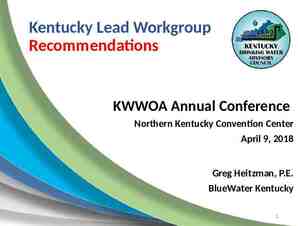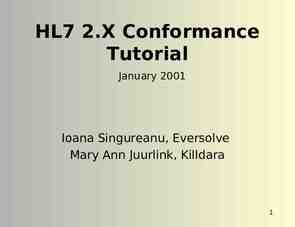Training Human Errors and the Error Abstraction Process 1
15 Slides3.91 MB

Training Human Errors and the Error Abstraction Process 1

Outline of Training Human Errors Tracing back Requirements Faults to Human Errors Task Description 2

Error-Fault-Failure (note: faults are also called defects) 3

HUMAN ERROR Intention: “eat cereal with milk and drink orange juice” 4

Intention: Drive to grocery store Plan (set of actions): 1. Start the Car 2. Put transmission in reverse 3. Back down the driveway 4. Navigate the route to store Human Errors All human errors have well-defined psychological origins Taking Action Executio n Errors Processing & Decision Making Sensing & Perception Human InformationProcessing stages Planning Errors Inattention Performing an action incorrectly due to inattention or carelessness Slips Memory Failures Forgetting to perform a planned action Lapses Lack of Knowledge Lack of knowledge about the problem OR Lack of knowledge about the rules/procedures required to solve the problem Mistakes Cognitive Failure Mechanisms Human Errors 5

Human Error – A Formal Definition Human error is the failure to reach intended goals due to one or more cognitive processes going awry during the chain of events that include problem-perception, decisionmaking, and execution. 6

Mapping Everyday Failures to Human Errors Start by answering the following questions: 1. What was the situation/scenario? 2. Did the situation require problem-solving (i.e., plan-development) or did it require the practitioner to perform routine actions (i.e., follow steps of a plan) Yes D1: Did the error occur while the practitioner was following the steps of a plan? No D2 : Did the practitioner execute a step incorrectly (i.e., performed an action incorrectly) due to carelessness? Yes Slip Slip Does the situation require plandevelopment? No Lapse Failure: Pours orange juice in cereal instead of milk Mistake Plan: 1. Pour milk in cereal 2. Eat Cereal 3. Pour OJ in glass 4. Drink Orange Juice

Mapping Everyday Failures to Human Errors Start by answering the following questions: 1. What was the situation/scenario? 2. Did the situation require problem-solving (i.e., plan-development) or did it require the practitioner to perform routine actions (i.e., follow steps of a plan) Yes D1: Did the error occur while the practitioner was following the steps of a plan? No D2 : Did the practitioner execute a step incorrectly (i.e., performed an action incorrectly) due to carelessness? Yes Slip se p a L No Lapse Mistake Failure: Drives off with hose in fuel tank Does the situation require plandevelopment? Plan: 1. Put pump attached to the hose in the fuel tank 2. Fill tank 3. Stop pump 4. Remove pump from fuel tank.

Mapping Everyday Failures to Human Errors Start by answering the following questions: 1. What was the situation/scenario? 2. Did the situation require problem-solving (i.e., plan-development) or did it require the practitioner to perform routine actions (i.e., follow steps of a plan) Failure: A physician misdiagnosing a patient when faced with an unfamiliar clinical situation What is the situation? Yes D1: Did the error occur while the practitioner was following the steps of a plan? No D2: Did the practitioner execute a step incorrectly (i.e., performed an action incorrectly) due to carelessness? Slip Does the practitioner (physician in this case) need to develop a plan? No Lapse Mistake take s i M

Task Description What caused that fault? Faults in PGCS SRS Report human errors for each fault 10

What is a Requirement Fault? “A fault causes a requirement to deviate from standards, specifications, and specified quality attributes” Quality Attributes: Requirements should be unambiguous, complete, correct, and consistent 11

Study Task What caused that fault? Faults in PGCS BRD Report human errors for each fault 12

Abstracting Human Errors from Requirement Faults (HEAA) 13

Abstracting Human Errors from Requirements faults STEP 1: Choose one of the following options to decide where the fault originated: Option (a) – Requirement Analysis. Option (c) – Requirement Specification. Option (b) – Requirement Elicitation. Option (d) – Requirement Management Step 2: Consider the scenario & pick the human error type. Requirement: “System must be able to create unique for each new order" Fault - this line is incomplete. It might be ID# or Order#. Step 1: RE activity in which the human error occurred (pick one): Analysis Elicitation Specification Management Step 2: Human error type (pick one) Slip Step 3: Pick the appropriate Human Error Slips: Clerical Error: Carelessness while documenting specifications from elicited requirements. Lack of consistency In Requirement Specifications: Lack of logical coherence in the requirement specification documentation, which makes it difficult to be interpreted correctly Mistakes: Environment error: misunderstanding or misuse of the requirement specification tools available for use in the project Syntactic error: Misunderstanding of grammatical rules of natural language (English) or grammatical rules of a formal requirement specification language. Lapse Mistake Step 3 - The human error(s) you picked (from the box in HEAA): Clerical Error SCENARIO: The Requirements Author was inattentive while writing specification. She did not write the word 'ID', which makes the sentence incomplete

Abstracting Human Errors from Requirements faults STEP 1: Choose one of the following options to decide where the fault originated: Option (a) – Requirement Analysis. Option (c) – Requirement Specification. Option (b) – Requirement Elicitation. Option (d) – Requirement Management Fault: No security requirements in the SRS document Step 2: Consider the scenario & pick the human error type. Step 1: RE activity in which the human error occurred (pick one): Analysis Elicitation Specification Management Step 2: Human error type (pick one) Slip Step 3: Pick the appropriate Human Error Slips: Clerical Error: Carelessness while analyzing elicited requirements Mistakes: Application error: stakeholder's or requirement gathering person's misunderstanding of a part of (or the whole) system or problem Environment error: misunderstanding or misuse of the requirement gathering tools available for use in the project Wrong assumptions made by requirement gathering person about user/stakeholder needs or opinions or any incorrect assumptions made by requirement gathering person. Problem-Solution errors: Lack of knowledge about the elicitation process (and/or general RE know-how) Lapse Mistake Step 3 - The human error(s) you picked (from Problem-solution error the box in HEAA): SCENARIO: Lack of knowledge (or experience) about elicitation process.






